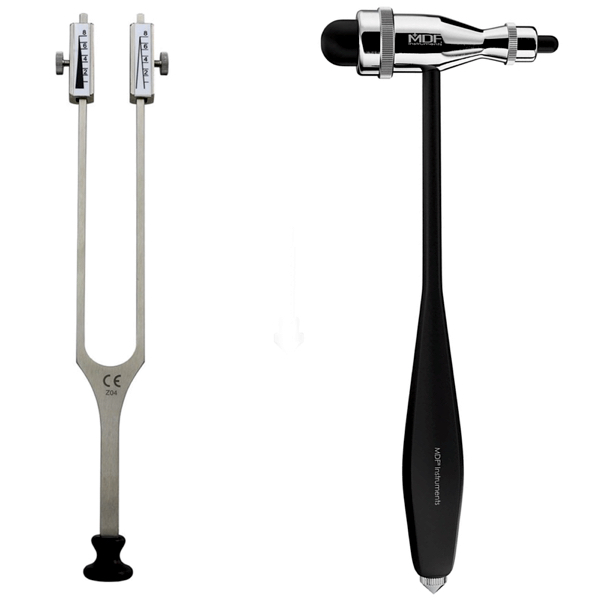Cervical dystonia is a neurological movement disorder that causes the muscles in your neck to contract (tighten) involuntarily. Cervical dystonia is characterized by involuntary muscle contractions in the neck that cause abnormal movements and postures of the neck and head. In some cases, these abnormal contractions may be sustained or continuous; in others, they may be present as spasms that can resemble tremor. The severity of cervical dystonia can vary, but the disorder can cause significant pain and discomfort as well as difficulty due to the abnormal postures.
Synonyms of Cervical Dystonia: Focal Dystoniaidiopathic Cervical Dystonia; Isolated (Formally Primary) Cervical Dystonia; Spasmodic Torticollis, Spasmodic Wryneck; and Torticollis.
Symptoms – symptoms of cervical dystonia may begin slowly and can involve any of the muscles of the neck. The head posture in cervical dystonia can vary. The most common abnormal posture associated with cervical dystonia is the twisting of the chin toward a shoulder so that the head rotates sideways (torticollis). Other abnormal postures associated with cervical dystonia including anterocollis, in which the head tips forward; retrocollis, in which the head is tilted backward; or laterocollis, in which the head tilts toward one side. There can also be shifting of the head on the shoulders in a forward (anterior sagittal shift) or backward (posterior sagittal shift) direction. Often cervical dystonia is complex and combines several angles of head movement. In some people with isolated CD, there may also be a postural tremor of the hands. Symptoms of cervical dystonia vary over the course of the disorder.
CAUSES: Cervical dystonia is classified as an isolated dystonia if there are no other associated abnormal findings, such as spasticity, Parkinsonism or ataxia. Most isolated cervical dystonia had no identifiable underlying causes. However, in some cases, cervical dystonia can arise from another underlying cause and be considered secondary (occurring as consequence of another disorder or condition). In most cases, isolated cervical dystonia is idiopathic although a genetic susceptibility may be present as evidenced by a positive family history in approximately 10-25% of cases. Cervical dystonia is associated with changes (mutations) in several genes (GNAL, THAP1, CIZ1, ANO3 genes) and several possible environmental factors. However, at this time there is no gene test that is recommended for clinical purposes in people with cervical dystonia. Some cases of cervical dystonia may have an identifiable cause (secondary cervical dystonia). In these cases, cervical dystonia may develop due to the use of certain drugs such as anti-psychotics or certain nausea medications with dopamine receptor blocking activity. In most secondary cases, such as those due to toxins or degenerative brain diseases, there are additional signs and symptoms other than cervical dystonia. Whether trauma to the neck could cause cervical dystonia remains controversial. Cervical dystonia is a neurological disorder.
Diagnosis of cervical dystonia is based upon clinical examination, a detailed patient history, and knowledge of the disorder. No specific laboratory or imaging test confirms a diagnosis of cervical dystonia. There are no abnormalities in laboratory or imaging tests. Magnetic resonance imaging (MRI) of the brain is normal, and MRI of the neck does not help with the diagnosis unless compression of the spinal cord is suspected. Electromyography is not indicated unless there are additional signs of nerve irritation.
Treatments
Not every treatment option for cervical dystonia is successful. Therefore, no single strategy is appropriate for every case. Most therapies are symptomatic and are intended to relieve spasms, pain and disturbed postures or functions.
There are essentially three treatment options: botulinum toxin injections, oral medications, and, in some cases, surgery. These treatments may be used alone or in combination. In addition, physical therapy may provide a helpful complement to medical treatment. In some cases, if there is a trick such as touching the chin, a soft cervical collar may be beneficial.
Botulinum toxin injections are the treatment of choice for focal dystonia, which is the neck and head in cervical dystonia. Botulinum toxin is a neurotoxin that is injected into the dystonic neck muscles in small doses. Botulinum toxin works by preventing the nerve from releasing a messenger, called acetylcholine, that tells the muscle to contract. This causes weakness of the muscle. The effect of botulinum toxin on the muscle begins approximately 2-3 days following injection, peaks at around 4 weeks, and provides relief for approximately 2-6 months. Botulinum toxin treatment is not a cure, but rather a symptom treatment. There are now four brands of Botulinum toxin that have been approved by the Food and Drug Administration (FDA) for the treatment of individuals with cervical dystonia. There are three brands of botulinum toxin serotype A, including onabotulinumtoxinA (BOTOX, Allergan Inc.) abobotulinumtoxinA (Dysport, Tercica Inc) and incobotulinumtoxinA (Xeomin, Merz Pharmaceuticals). There is one formulation of botulinum toxin type B called rimabotulinumtoxinB (Myobloc, Solstice, US World Meds).
Additionally, while Botox injections can be very helpful, they are not a cure and often requires additional treatment to maintain their benefit.
Currently, there are no oral medications that are FDA approved for use in dystonia. Among the oral medications used, dopaminergic agents (levodopa), anticholinergic agents (benztropine, trihexyphenidyl), baclofen and clonazepam are the most frequently used. These drugs are usually most effective in children with generalized dystonia. In adults, the side effects of these agents, including memory problems and sedation, often occur before an effective dose can be reached.
Deep brain stimulation surgery (DBS) is effective for cervical dystonia and may be appropriate for patients who lose their response to botulinum toxin, or have a form of cervical dystonia that is difficult to treat with the injections, in particular anterocollis. DBS involves the placement of electrodes (thin wires) into the area of the brain called the globus pallidus on both sides. The electrodes are connected to stimulators which send small electrical pulses to the brain. Although the precise mechanism is not clear, the electrical impulses seem to “reset” the brain and improve the dystonic movements. After the DBS is placed, the stimulators are programmed for the optimal outcome.
Resources:
https://myobloc.com/Cervical-Dystonia/about-cervical-dystonia
Migraine
A migraine is a type of headache. It may occur with symptoms such as nausea, vomiting, or sensitivity to light and sound. In many people, a throbbing pain is felt only on one side of the head.
Focal Spasticity
Spasticity is a condition in which muscles stiffen or tighten, preventing normal fluid movement. The muscles remain contracted and resist being stretched, thus affecting movement, speech and gait.
Cervical Dystonia
Cervical dystonia is a rare neurological disorder that originates in the brain. It is the most common form of focal dystonia in an office setting. Cervical dystonia is characterized by involuntary muscle contractions in the neck that cause abnormal movements and postures of the neck and head.
Sialorrhea
Sialorrhea, more commonly known as drooling, is the medical term for an excess spillage of saliva from the mouth. It is a common symptom in certain neurodegenerative diseases, such as Parkinson’s disease (PD).




